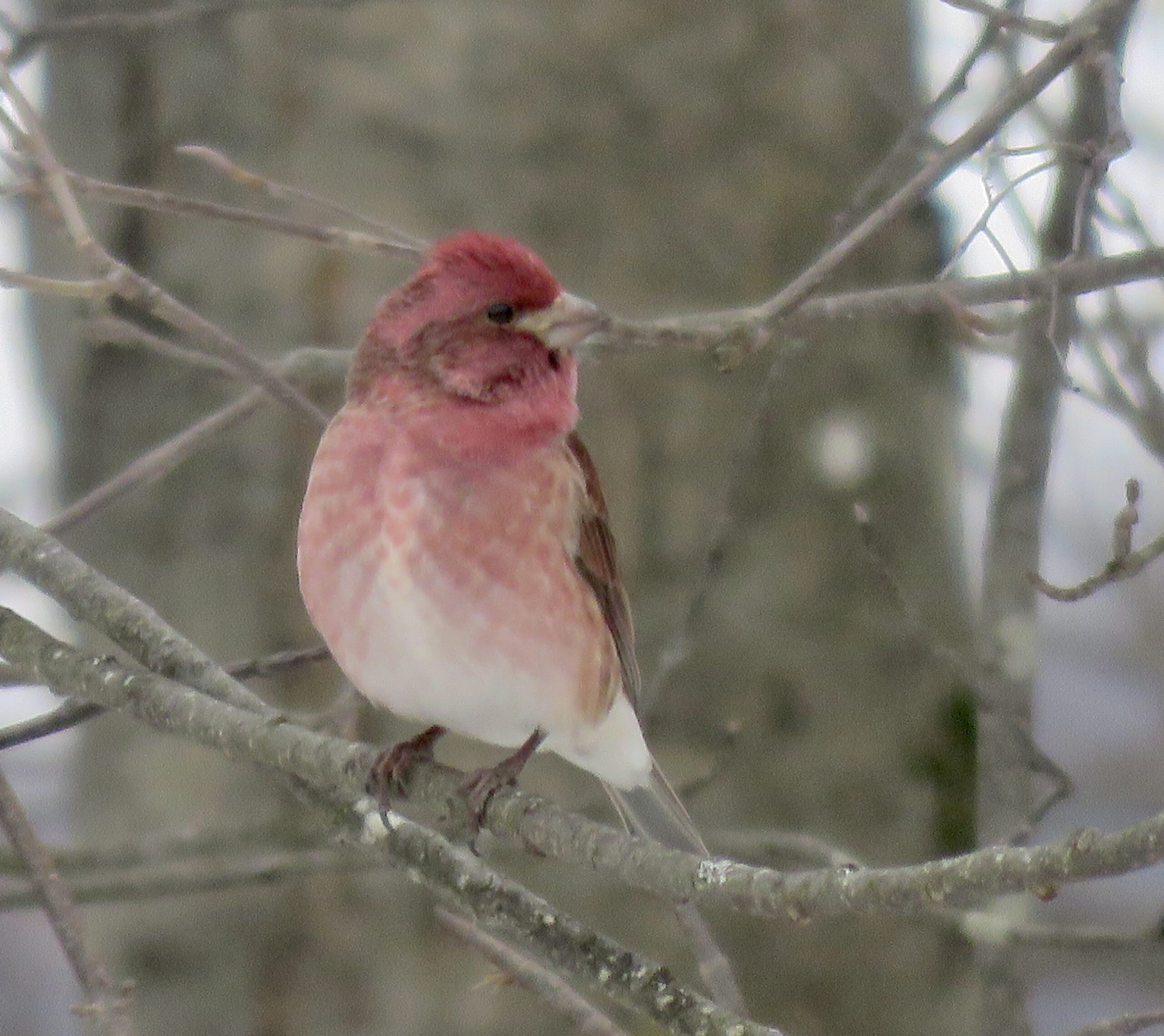Purple Finch Research Project: A Call For Researchers and Field Ornithologists –
By Matt Young:
We have identified three areas where recordings are needed for three different FiRN projects. The Calgary-to-Edmonton area remains a priority spot for Evening Grosbeaks and Red Crossbills, but we need more detailed Evening Grosbeak recordings from western Alberta to western Manitoba. We’re also looking for more Red Crossbill recordings from western Alberta to interior northern BC and Yukon Territory, and Purple Finch recordings from Vancouver, BC up Rte 99 to Lillioot, BC and also from Williams Lake, BC to Bella Coola, BC.
For the Purple Finch Project, here are more of the finer details:
Numerous species have wide geographic ranges, and some have already-described subspecies, but little is known about their flight calls.
Even today, some North American finches are unstudied for possible geography/taxon-specific call variation. Flight call characteristics distinguish some finch taxa. For example, Red Crossbills and Evening Grosbeaks display multiple categorically distinct flight call “types.”
Like with Evening Grosbeaks subspecies, Purple Finch subspecies also vary in communication signals. Structurally simple calls (i.e. flight calls) can be categorically distinct for the Eastern (Type 2) and Western (Type 1) subspecies of Purple Finches of North America. In fact, their songs, migratory behaviors, and to a degree their plumages also differ. Genetic work suggests these two taxa diverged somewhere between 90,000 to 900,000 years ago.
We have already described characteristics of the flight call differences of North American Purple Finches in the recently published Stokes Finch Guide, but prior to that, FiRN board members Matt Young and Tom Hahn and students from UC-Davis described the differences in a poster for The Society of Integrative and Comparative Biology. We also have another paper in the works describing the differences in greater details, but the findings so far have yielded the below.
Calls fell into at least two clear “types:”
 |
Flight call: “Eastern” soft squeaky tic-tic; very distinctive from the western type 1 Purple Finch and can somewhat be confused with other finch flight calls if not heard well.
https://www.xeno-canto.org/341484
“Western” hard pik-pik; very distinctive and different from flight call of Eastern Purple Finch and the other finches.
https://www.xeno-canto.org/302581
Now, we’d like to see if the two populations breed side-by-side or not in areas from Vancouver, BC up Rte 99 to Lillioot, BC and also from Williams Lake, BC to Bella Coola, BC. Do they assortatively mate according to subspecies/call type?
For interested researchers, we also likely have grant funding to help with costs to study Purple Finches and other finches. For more see the article on our new Small Grant Funding Program above.
Please disregard yesterday’s blog post given we were playing around with some backend things on the website and that blog message was inadvertently sent out. Apologies. Thanks for understanding!
The Finch Research Network (FiRN) is a nonprofit, and was granted 501c3 status in 2020. We are a co-lead on the International Evening Grosbeak Road to Recovery Project, and have funded almost $22,000 to go towards research, conservation and education for finch projects in the last couple years. FiRN is committed to researching and protecting these birds like the Evening Grosbeak, Purple Finch, Crossbills, Rosy-finches, and Hawaii’s finches the honeycreepers.
If you have been enjoying all the finch forecasts, blogs and identifying of Evening Grosbeak and Red Crossbill call types (20,000+ recordings listened to and identified), redpoll subspecies and green morph Pine Siskins FiRN has helped with over the years, please think about supporting our efforts and making a small donation at the donate link below. The Evening Grosbeak Project is in need of continued funding to help keep it going.
Donate – FINCH RESEARCH NETWORK (finchnetwork.org)
Book Link
For help with Finch ID and much much more, here is a link to the exciting and newly released Stokes Guide to Finches of the United States and Canada: https://www.amazon.com/Stokes-Finches-United-States-Canada/dp/0316419931
Shirt Link
For a commemorative Winter Finch Forecast shirt or a newly released Goldfinch shirt with all 3 Goldfinch species that makes for a great holiday present, see here: https://finchnetwork.org/shop
Please think about joining Finch Research Network iNaturalist Projects:
Winter Finch Food Assessment Project/Become a Finch Forecaster: https://finchnetwork.org/the-finch-food-assessment-become-a-finch-forecaster

